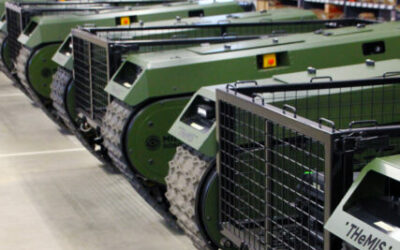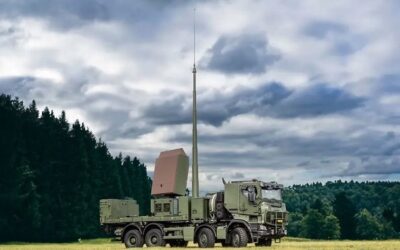Modern Day Marine 2018
SubSeaSail has been developing its self-described “positionable, controllable buoy” with internal funds during the last 18 months. During a walkabout of the Modern Day Marine conference grounds, Mark Ott, one partner of the San Diego-based company, said the fully functional platform is at Technology Readiness Level 6, which in US DoD acquisition language, notes this representative model or prototype system, has been tested in a relevant environment, and represents a major step up in a technology’s demonstrated readiness.
Chris Todter is the second SeaSubSail partner and Michael Jones is the company’s Managing Partner.
“This system is self-deployable on the water,” the industry expert added, and pointed out, “two of us place this in the water, and either tow it out of the harbor behind our testing boat or let it sail out on its own.”
The sailing drone, with its hull and keel submerged under water, and propelled by a wind-catching assembly above water, can achieve 3kts in about 12 kts of wind. Mr Ott added: “This goes indefinitely, because it sails using the wind and uses solar power generated inside the transparent wing to cover the ‘house load’ and power for the payload.”
This persistent, and self-deploying and retrieving platform, can be fitted with whatever sensors the customer is interested in using to gain more data on the environment – meteorological, defence, subsurface or other. “This is an autonomous platform that can perform received instructions – it can stay on station indefinitely or sail to one or more locations, and it is affordable – less than $(US) 20,000 once in quantity production,” Mr Ott continued.
To date, SubSeaSail has successfully demonstrated Iridium communications, WiFi, radio and like command and control systems on this vessel. SubSeaSail is looking for collaborative industry partners and funding to take this vessel to TRL 7 and higher – integrating other sensors and systems to “talk to” and understand what information they need to glean from the area in which the vessel is operating.
Mr Ott was asked to differentiate SubSeaSail from other competitors. He pointed out, when compared to a wave glider in this market space, for instance, his platform has greater speed and performance, and holds station better against local currents. And whereas a wave glider is dependent on wave, the SubSeaSail is dependent on what makes waves – the wind: “We’re further up the energy stream in terms of tapping into what we’re using to go someplace. And of course, we’re easily deployable from ship – where we just drop it in the water and the same thing for retrieving – it’s very easy for retrieving.”
Conceptually, the SubSeaSail platform can be networked or included in a “swarm” to allow the operator to learn more about a harbor, chokepoint or other geographical area.
SubSeaSail has been demonstrated to the US Navy and some academic institutions. The SubSeaSail platform should operate in Sea State 3 without problem and a future version will completely submerge when needed.
The big advantage is by having the cargo and keel underwater “we’re not producing any waves, so we don’t have ‘wave making drag’,” Mr. Ott concluded. This vessel, which is completely scalable, is useful in many applications in commercial, military and scientific sectors. The first US patent has been issued and others are pending.
Marty Kauchak
























